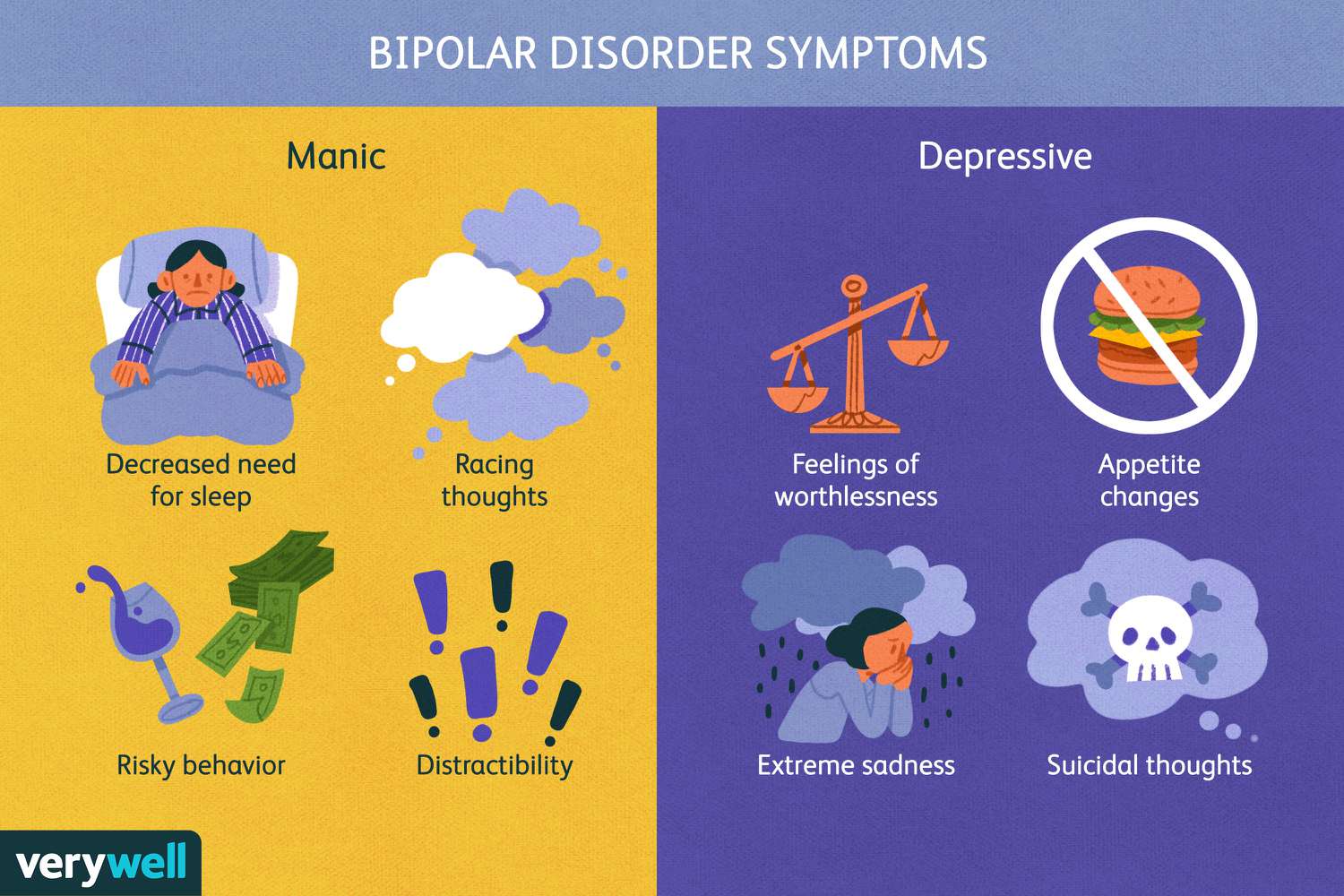Who gets diagnosed with bipolar disorder?
To be diagnosed with bipolar disorder, a person must have experienced at least one episode of mania or hypomania. Hypomania is a milder form of mania that doesn't include psychotic episodes. People with hypomania can often function well in social situations or at work.

Bipolar affective disorder, bipolar affective disorder, manic depressive disorder, manic depression, manic-depressive illness, or bipolar disorder…
Manic depression is a mental illness characterized by periods of mania and depression. Patients experience exuberance during the mania period and depression during the depression period.
These two periods, which seem to be completely opposite to each other, continue with remission and exacerbation. Except for the attack periods, the person returns to normal. However, some patients may experience symptoms that partially affect daily life.
Manic Period
The period of mania or exuberance is the period when the mood is elevated, overexcitement, and joyful.
During this period, various emotions, behaviors, and thoughts are observed, such as exaggerated thoughts, unrealistic projects, feeling too good, accelerating the flow of thought, feeling overly energetic, reducing the need for sleep, and tending to overly exciting and fun activities.
Depression Period
In the period of depression or depression, unhappiness, hopelessness, pessimism, and lack of self-confidence are experienced. The person feels worthless, feelings of guilt and remorse arise, he may experience loss of appetite and sleeplessness, he may have thoughts of death and suicide, and he begins not enjoying the activities he normally enjoys.
Bipolar disorder, which does not differ according to gender, is encountered at an average rate of 2-3% in society.
The first attack usually occurs between the ages of 20-25.
The causes of manic depression are not yet fully explained. However, genetic factors are known to have a great influence.
In addition to genetic factors, it is known that changes in the transport or level of chemicals that provide intercellular transmission in the brain affect the regulation of thought, memory, learning, and mood by disrupting the transmission in the brain.
In addition to all these, it is known that high stress and traumatic events cause the emergence of the first disease period or trigger the disease.
The course of manic depression often varies seasonally. While people experience mania in spring and summer, they go into depression in autumn and winter.
In addition, it is observed that the attacks are more severe in seasonal transitions.
The symptoms, duration, and severity of the disease differ from person to person.
In some patients, mania may be dominant and in others depression may be dominant, or both periods may be experienced equally. Periods can last from a few days to several months.
When the treatment process is not started, the duration of the periods may be longer and the time between attacks may decrease.
Symptoms of Bipolar Disorder
Manic Symptoms:
Excessive energy,
Excessive joy or irritability
Distraction,
Decreased need for sleep
Excessive increase in thoughts
Excessive spending,
Excessive sexual desire
Excessive talkativeness and fast speech
Overconfidence, seeing oneself as too important and big, etc.
The presence of these symptoms alone does not indicate mania. For a diagnosis to be made, at least a few of them must be together and have been going on for a while.
When mania and depression coexist, there is a transition between the two moods and the patient has symptoms of both moods.
Depression Symptoms:
Loss of interest,
Decreased energy and fatigue
Tiredness,
Inability to sleep,
Unhappiness,
Pessimism,
Unwillingness to communicate
Difficulty making decisions
Anorexia,
Memory loss, etc.
Symptoms of Hypomania:
Excessive self-confidence,
Decreased need for sleep
Easily distracted,
Increased physical and mental activity, etc.
Hypomania is usually more difficult to diagnose because it has milder symptoms than mania.
Classification of Manic Depression
According to the duration of the attacks and the way they are seen:
Bipolar I Disorder: At least one episode of mania or mania-depression has been experienced.
Bipolar II Disorder: At least one episode of depression and one episode of hypomania. The person must not have had a manic episode.
Cyclothymic Disorder: Depression and hypomania attacks have been experienced for at least two years. The person must not have had a manic episode.
Moreover; It is called Rapid Cycle Mania if there are four or more episodes in a year, Extremely Rapid Cycle Mania if there are four or more episodes in a week, Seasonal Mania if the episodes occur in certain seasons, and Postpartum Mania if they occur within four weeks of birth.
Treatment of Bipolar Disorder
Two-stage treatment is usually applied in Manic Depression: Treatment of the attack and prevention of relapse.
Attacks can be prevented with the use of preventive drugs such as lithium, valproate, and carbamazepine. Psychiatric support is also of great importance.
